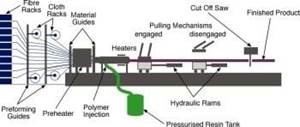Need for standardization in composites manufacturing
CW Talks is “on” and already proving to be well worth a listen.
CW Talks: The Composites Podcast is up and running. If you have not yet listened in, you can give it a try at www.compositesworld.com/podcast, or via iTunes and Google Play. We have recorded seven episodes, thus far, talking to a variety of people who represent a variety of interests in the composites industry. Our discussions have ranged widely, covering many topics, depending on the interviewee’s background and composites expertise.
I was, therefore, somewhat surprised, recently, when three CW Talks interviewees brought up the same subject in response to my question about challenges facing the composites industry and how they might be addressed.
The challenge each mentioned? The need for standardization in composites manufacturing.
Notably, the three in question represent diverse industry segments: Greg Mark, founder and CEO of 3D printer manufacturer Markforged; James Austin, CEO of technical fabrics manufacturer North Thin Ply Technology (NTPT); and Frazer Barnes, managing director of carbon fiber recycler ELG Carbon Fibre Ltd.
Before I tell you what they said, a little background about standardization. If you know even a little bit about composite materials, you know that they are famous for their ability to provide engineered solutions to many manufacturing challenges. This is thanks primarily to the many combinations of resins, fibers, tooling, and manufacturing processes available. The bespoke nature of these engineered solutions is a blessing and a curse — a blessing because of composite materials’ high adaptability, and a curse because of the extreme complexity that results, making it difficult for non-composites engineers and designers to understand and use the material effectively. In fact, materials standardization, it is argued, would help reduce that complexity and make adoption of composite materials easier and quicker.
This idea was first raised in my CW Talks conversations by Mark (Markforged), who described market reaction when he first introduced the Mark One, his 3D printer that applies continuous carbon fiber reinforcement in a thermoplastic resin matrix. Discussions about the Mark One revolved around the anisotropic nature of the material, which Mark says was readily understood and appreciated by a vast majority of attendees at the composites tradeshows where Markforged exhibited. But at noncomposites tradeshows, Mark says many engineers he spoke to, although they understood the words he was saying, could not wrap their minds around anisotropic material properties. As a result, they had difficulty immediately understanding the benefit or application of a 3D printer that applies continuous carbon fiber reinforcements. Which means, in essence, they had difficulty understanding composites.
For Austin (NTPT) and Barnes (ELG), their calls for standardization grew out of a simple question: What’s required of the composites industry to help speed maturation and adoption? Austin lists innovation and cost as his top two challenges, but follows with this: “A piece of the industry that is still missing is a standardization of materials. And I think half the industry is with me on that and half the industry is not with me.” Austin notes that metallic alloys are already standardized, which makes them easy to specify. And although composite materials might not be standardizable in the same way, they can be standardized in some way. He says, “Whilst the world is not overburdened with highly refined and skilled composite engineers, the rate of uptake is, I think, limited . . . and standardization is one way through that.”
For Barnes, material standardization would be at the top of his to-do list, were he named CEO of the composites industry for a year, and he also draws a correlation with cost: “Every material we treat as an individual material. We don’t have standard grades . . . and that brings a lot of cost in initial evaluation and characterization.” And then, echoing Mark and Austin, he says, “We need to make this material easier to use by people who may not be composites experts.”
This last point is a difficult one against which to argue, particularly for an industry starved of engineering talent. Standardization, perhaps, deserves serious consideration.
Related Content
Combining multifunctional thermoplastic composites, additive manufacturing for next-gen airframe structures
The DOMMINIO project combines AFP with 3D printed gyroid cores, embedded SHM sensors and smart materials for induction-driven disassembly of parts at end of life.
Read MorePultrusion: The basics
A primer describing what pultrusion is, its advantages and disadvantages, and typical applications.
Read MoreManufacturing the MFFD thermoplastic composite fuselage
Demonstrator’s upper, lower shells and assembly prove materials and new processes for lighter, cheaper and more sustainable high-rate future aircraft.
Read MorePEEK vs. PEKK vs. PAEK and continuous compression molding
Suppliers of thermoplastics and carbon fiber chime in regarding PEEK vs. PEKK, and now PAEK, as well as in-situ consolidation — the supply chain for thermoplastic tape composites continues to evolve.
Read MoreRead Next
“Structured air” TPS safeguards composite structures
Powered by an 85% air/15% pure polyimide aerogel, Blueshift’s novel material system protects structures during transient thermal events from -200°C to beyond 2400°C for rockets, battery boxes and more.
Read MoreDeveloping bonded composite repair for ships, offshore units
Bureau Veritas and industry partners issue guidelines and pave the way for certification via StrengthBond Offshore project.
Read MorePlant tour: Daher Shap’in TechCenter and composites production plant, Saint-Aignan-de-Grandlieu, France
Co-located R&D and production advance OOA thermosets, thermoplastics, welding, recycling and digital technologies for faster processing and certification of lighter, more sustainable composites.
Read More






















